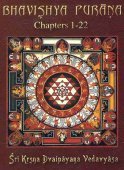Rathayatra, Rathayātrā, Ratha-yatra: 11 definitions
Introduction:
Rathayatra means something in Hinduism, Sanskrit, the history of ancient India. If you want to know the exact meaning, history, etymology or English translation of this term then check out the descriptions on this page. Add your comment or reference to a book if you want to contribute to this summary article.
In Hinduism
Vaishnavism (Vaishava dharma)
Source: ISKCON Press: GlossaryRathayātrā (रथयात्रा).—The festival celebrating Kṛṣṇa’s return to Vṛndāvana; The journey of the chariots, a traditional Vaiṣṇava festival held every year at Jagannātha Purī in Orissa.
Source: Pure Bhakti: Brhad BhagavatamrtamRathayātrā (रथयात्रा) refers to:—(or Guṇḍicā-yātrā) The Festival of the Chariots; an annual procession held in Purī in which Śrī Jagannātha-deva, His brother Śrī Balarāma, and Their sister Subhadrā travel from their temple to Guṇḍicā in the company of their innumerable devotees. (cf. Glossary page from Śrī Bṛhad-bhāgavatāmṛta).

Vaishnava (वैष्णव, vaiṣṇava) or vaishnavism (vaiṣṇavism) represents a tradition of Hinduism worshipping Vishnu as the supreme Lord. Similar to the Shaktism and Shaivism traditions, Vaishnavism also developed as an individual movement, famous for its exposition of the dashavatara (‘ten avatars of Vishnu’).
Shaktism (Shakta philosophy)
Source: Brill: Śaivism and the Tantric Traditions (shaktism)Rathayātrā (रथयात्रा) refers to the “chariot procession”, and formed a part of the Navarātra Tantric ritual (an autumnal festival of the warrior goddess Caṇḍikā).—On Mahānavamī: worship of Bhadrakālī with mantras from the Kālīkula in Orissa (Sanderson 2007, 255–295); worship of the Goddess in a trident; repetition of rites on Mahāṣṭamī; kumārīpūjā (worship of a maiden); rathayātrā (chariot procession) of the Goddess.—Various 8th century sources refer to rituals such as rathayātrā, for example: Devīpurāṇa, Kālikāpurāṇa, Kṛtyakalpataru, Durgābhaktitaraṅgiṇī, Durgāpūjātattva, Durgāpūjāviveka, Bhadrakālīmantravidhiprakaraṇa in Sanderson (2007); account of the Durgā Pūjā in Kelomal, West Bengal (Nicholas 2013).

Shakta (शाक्त, śākta) or Shaktism (śāktism) represents a tradition of Hinduism where the Goddess (Devi) is revered and worshipped. Shakta literature includes a range of scriptures, including various Agamas and Tantras, although its roots may be traced back to the Vedas.
India history and geography
Source: Cologne Digital Sanskrit Dictionaries: Indian Epigraphical GlossaryRatha-yātrā.—(EI 11), a festival. Note: ratha-yātrā is defined in the “Indian epigraphical glossary” as it can be found on ancient inscriptions commonly written in Sanskrit, Prakrit or Dravidian languages.

The history of India traces the identification of countries, villages, towns and other regions of India, as well as mythology, zoology, royal dynasties, rulers, tribes, local festivities and traditions and regional languages. Ancient India enjoyed religious freedom and encourages the path of Dharma, a concept common to Buddhism, Hinduism, and Jainism.
Languages of India and abroad
Sanskrit dictionary
Source: DDSA: The practical Sanskrit-English dictionaryRathayātrā (रथयात्रा).—the solemn procession of an idol placed in a car (usually drawn by men).
Rathayātrā is a Sanskrit compound consisting of the terms ratha and yātrā (यात्रा). See also (synonyms): rathamahotsava.
Source: Cologne Digital Sanskrit Dictionaries: Shabda-Sagara Sanskrit-English DictionaryRathayātrā (रथयात्रा).—f.
(-trā) A festival at which the chariots of the gods go in procession: in Bengal and Orissa it is applied to the procession of Krishna, as Jagannath, on the second of light fortnight of Asara. E. ratha, and yātrā going.
Source: Cologne Digital Sanskrit Dictionaries: Monier-Williams Sanskrit-English DictionaryRathayātrā (रथयात्रा):—[=ratha-yātrā] [from ratha] f. ‘car-procession’, the festive proc° of an idol on a car ([especially] the proc° of the c° of Jagan-nātha; also trāmahotsava, m.), [Horace H. Wilson; Catalogue(s)]
Source: Cologne Digital Sanskrit Dictionaries: Yates Sanskrit-English DictionaryRathayātrā (रथयात्रा):—[ratha-yātrā] (trā) 1. f. The Rath festival.
[Sanskrit to German]
Sanskrit, also spelled संस्कृतम् (saṃskṛtam), is an ancient language of India commonly seen as the grandmother of the Indo-European language family (even English!). Closely allied with Prakrit and Pali, Sanskrit is more exhaustive in both grammar and terms and has the most extensive collection of literature in the world, greatly surpassing its sister-languages Greek and Latin.
Nepali dictionary
Source: unoes: Nepali-English DictionaryRathayātrā (रथयात्रा):—n. chariot procession;
Nepali is the primary language of the Nepalese people counting almost 20 million native speakers. The country of Nepal is situated in the Himalaya mountain range to the north of India.
See also (Relevant definitions)
Partial matches: Ratha, Yatra.
Starts with: Rathayatramahotsava, Rathayatraprayoga.
Full-text: Rathayatraprayoga, Rathotsava, Rathayatramahotsava, Rathotsav, Gundica, Jagannathasvamirathalila, Snanayatra, Gundicayatra, Rathamahotsava, Maiden, Kumaripuja, Tripurantaka, Panthadurga.
Relevant text
Search found 12 books and stories containing Rathayatra, Ratha-yatra, Ratha-yātrā, Rathayātrā; (plurals include: Rathayatras, yatras, yātrās, Rathayātrās). You can also click to the full overview containing English textual excerpts. Below are direct links for the most relevant articles:
Vedic influence on the Sun-worship in the Puranas (by Goswami Mitali)
Part 5 - The Festivals Related to the Worship of Sun < [Chapter 5 - Rituals Related to the Sun-Worship in the Purāṇas]
Brihad Bhagavatamrita (commentary) (by Śrī Śrīmad Bhaktivedānta Nārāyana Gosvāmī Mahārāja)
Verse 2.1.199 < [Chapter 1 - Vairāgya (renunciation)]
Verse 2.1.209 < [Chapter 1 - Vairāgya (renunciation)]
Verse 2.1.183-184 < [Chapter 1 - Vairāgya (renunciation)]
Chaitanya Bhagavata (by Bhumipati Dāsa)
Verse 3.8.5 < [Chapter 8 - Mahāprabhu’s Water Sports in Narendra- sarovara]
Verse 3.8.4 < [Chapter 8 - Mahāprabhu’s Water Sports in Narendra- sarovara]
Introduction to chapter 8 < [Chapter 7 - Pastimes in Śrī Gadādhara’s Garden]
Bhajana-Rahasya (by Srila Bhaktivinoda Thakura Mahasaya)
Text 10 < [Chapter 8 - Aṣṭama-yāma-sādhana (Rātri-līlā–prema-bhajana sambhoga)]
Text 13 < [Chapter 8 - Aṣṭama-yāma-sādhana (Rātri-līlā–prema-bhajana sambhoga)]
Text 2 < [Chapter 1 - Prathama-yāma-sādhana (Niśānta-bhajana–śraddhā)]
Shrimad Bhagavad-gita (by Narayana Gosvami)
Verse 12.11 < [Chapter 12 - Bhakti-yoga (Yoga through Pure Devotional Service)]
Jainism and Patanjali Yoga (Comparative Study) (by Deepak bagadia)
Part 8 - Celebrations/ Festivals, Prayers and Prime symbol in Jain traditions < [Chapter 3 - Jain Philosophy and Practice]
Related products

